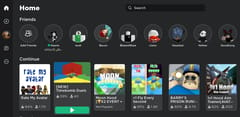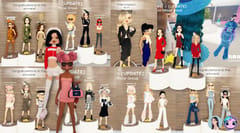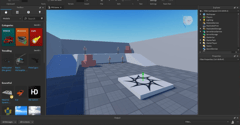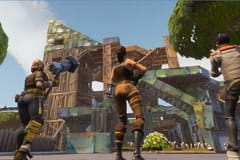
Crafting Mods in Minecraft: From Idea to In-Game Reality
Posted by Emily Carson October 4th, 2023
Minecraft, the sandbox game that has sparked the creativity of millions, owes much of its enduring appeal to the thriving modding community. Mods, short for modifications, are custom content created by players to enhance, alter, or completely transform the Minecraft experience. Crafting mods is a fascinating journey that takes creators from the spark of an idea to the realization of a fully functional in-game addition. In this article, we'll explore the modding process in Minecraft, from conception to implementation, and delve into the vibrant world of player-generated content that has become an integral part of the Minecraft experience.
1. Conception: The Birth of an Idea
Every mod starts with an idea, a vision of something new, exciting, or different that could enhance the Minecraft experience. This spark of creativity often arises from playing the game, identifying a feature gap, or envisioning an entirely unique concept. Whether it's a new biome, a creature, a set of tools, or a game-altering mechanic, the modding journey begins with the conception of an idea that resonates with the creator.
Tip: Keep a notebook or digital document to jot down mod ideas as they come. Inspiration often strikes at unexpected moments.
2. Research: Understanding the Minecraft Ecosystem
Once the idea takes shape, modders delve into the intricacies of Minecraft's mechanics, coding structure, and modding tools. Understanding how the game works at a fundamental level is crucial for a successful mod. This involves researching Minecraft's application programming interface (API), reviewing existing mods, and exploring community forums and tutorials.
Tip: The Minecraft Forge modding framework is a popular choice for modders due to its extensive documentation and community support.
3. Setting Up the Development Environment
With a solid understanding of Minecraft's structure, modders set up their development environment. This involves installing the necessary software, tools, and libraries to create and test mods. For many modders, this step includes using Integrated Development Environments (IDEs) like Eclipse or IntelliJ, as well as setting up the Minecraft Forge development kit.
Tip: Follow modding tutorials specific to the development environment you've chosen to ensure a smooth setup process.
4. Coding: Bringing the Idea to Life
The heart of modding lies in coding—the process of translating the modder's idea into a language that Minecraft understands. This involves writing Java code that interacts with Minecraft's API and introduces new features, mechanics, or content. Modders design their code to seamlessly integrate with the existing game while adding the desired functionality.
Tip: Break down the mod into smaller tasks and tackle them one at a time. This makes the coding process more manageable and helps prevent overwhelm.
5. Testing and Debugging: Iterative Refinement
Testing is a critical phase in the modding process. Modders need to ensure that their creation works as intended, doesn't clash with other mods, and doesn't introduce game-breaking bugs. This phase involves extensive playtesting, debugging, and refining the mod based on feedback from the testing phase.
Tip: Engage with the Minecraft modding community for feedback and assistance. Collaboration often leads to improved mods.
6. Artistic Elements: Crafting Visuals
Many mods involve creating new textures, models, or visual elements to complement their features. This artistic side of modding adds a layer of polish to the final product. Modders use graphic design tools to craft appealing textures or 3D models that seamlessly blend into the Minecraft aesthetic.
Tip: Resources like online texture generators or model editors can aid in the creation of visually appealing assets.
7. Documentation: Sharing Knowledge
Creating documentation is often an overlooked but crucial step in modding. Clear and comprehensive documentation provides instructions on how to install, configure, and use the mod. It also serves as a reference for other modders who may want to understand or contribute to the project.
Tip: Include a README file with your mod, detailing its features, installation instructions, and any known issues.
8. Sharing with the Community: Publishing the Mod
Once the mod is polished, tested, and well-documented, it's time to share it with the wider Minecraft community. Modders can publish their creations on platforms like CurseForge or the Minecraft Forums, making them accessible to players worldwide. Sharing mods not only allows creators to showcase their work but also contributes to the diverse ecosystem of player-generated content in Minecraft.
Tip: Engage with the community by responding to feedback, addressing issues, and considering feature requests for future updates.
9. Maintenance and Updates: Evolving with the Game
Minecraft, as a living and evolving game, receives updates and new features. Modders need to stay active in maintaining their creations, ensuring compatibility with the latest game versions and addressing any issues that may arise. Regular updates keep mods relevant and enjoyable for players over time.
Tip: Plan for future updates by designing your mod with flexibility and adaptability in mind.
10. Community Engagement: Building Connections
Modding Minecraft is never only about code, but about community. The more interactions occur between modders, gamers and people sharing the same interest in gaming the more it becomes like an extended family providing assistance and work towards achieving common goals. Modders participate in forums such as forum.minecraft.net or forums.modthegame.net, discord channels like the official modding
Tip: You might also want to attend a few modding events/conferences which allow interaction among other modders, exchange of knowledge and new idea discovery.
Conclusion: The Endless Possibilities of Modding
An adventure in Minecraft Modding: journey from idea to in-game reality in Creativity, Learning and Community Engagement. Modders are vital in framing how the Minecraft community experiences the game; they create more dimensions for the game and engage numerous fans. Regardless if you are an experienced modder looking for more challenges or planning to dive into the vast ocean of Minecraft modding – there is no limit here. Therefore, take your virtual hammer, launch your IDE, and start the journey of modding, where there are no boundaries in imagination.





